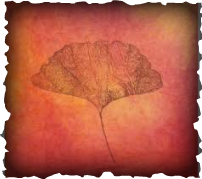3 Ways to Train the Compassionate Brain ~ Elisha Goldstein, Phd
When you’re focused on any activity, whether it’s your email, listening to a friend, or sitting in a formal meditation practice, your mind is bound to wander. In The Now Effect, I introduce the phrase “See, Touch, Go” as a way to remember how to work with the wandering mind. When it wanders we “See” that it wandered, then we “Touch” or spend a moment with the thought, and “Gently Go” back to the initial intention. Recently, a friend opened my eyes to how this phrase can be adapted to be a simple and practical way to strengthen a more compassionate brain.
I can’t wait to share it with you.
One day my friend Robin and I were discussing the power of “See, Touch, Go” to help stay focused on what matters. We talked about how it’s made us better listeners, more focused at work and less judgmental of ourselves when we veer from our intentions. She also told me that the other night she had an idea that adapted it for compassion. She said that the other night she was having a particularly difficult conversation with a friend and in that moment was able to See her own frustration arising and because she was aware of this she took an opportunity to Touch her heart to ignite a more loving awareness and decided to Go from there.
This transformed the moment from a battle to seeing the person in front of her as a woman with her own moment of struggling and that behind her eyes she had the same needs of wanting to feel understand and cared about. Wanting to feel accepted and have a sense of belonging.
With this compassionate awareness, Robin dropped down from her mental chatter and decided to listen to her friend and try and understand what she needed. The conversation went a whole lot better from there.
We can use this version of “See, Touch, Go” with self-compassion too. In a moment we that the volume in our minds is turned up with self-criticism and self-judgment, we can See what is happening, Touch our hearts as a gesture of self-kindness, maybe even asking what we actually need in that moment and Go from there. Instead of allowing the ruminative mind to spiral, maybe we step into a loving kindness practice to connect deeper to our hearts, or maybe a forgiveness practice to practice letting go. Or maybe what we need is to connect with another person so we call a friend, or get some space by taking a walk outside.
This reminds me of a saying in The Now Effect:
If all you did was put your hand on your heart and wish yourself well, it would be a moment well spent.
Here is the compassionate version of “See, Touch, Go” spelled out:
• See the struggle that is there, within you or within the relationship in the moment.
• Touch your heart either mentally or physically. Sensing into this area of the body is likely turn the volume down on the chatter and connect you to what really matters in the moment.
• Go from there, Go from the heart. Ask yourself, what do I need in this moment? What really matters? What action will align with what I need or what matters? Then do it.
It’s easy to see where this can come into play with ourselves, in parenting, at work, or in many of our relationships. Play with this practice with yourself and with others in the days to come and fine tune the skill of self-compassion and compassion. Allow your experience to enlighten you.
If we set the intention to practice the compassionate version of “See, Touch, Go” throughout the day I guarantee you that not only will you find more moments of love and joy, but the world would be a better place.
http://www.mindful.org/mindful-voices/on-mental-health/3-ways-to-train-the-compassionate-brain
Elisha Goldstein, PhD
Elisha Goldstein, Ph.D., is a clinical psychologist and conducts a private practice in West Los Angeles. He is author of book The Now Effect (Atria Books, 2012), Mindfulness Meditations for the Anxious Traveler (Atria Books, 2013), and co-author of A Mindfulness-Based Stress Reduction Workbook (New Harbinger, 2010).

 RSS Feed
RSS Feed